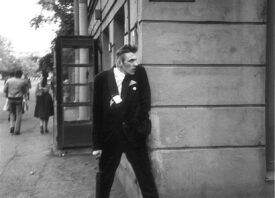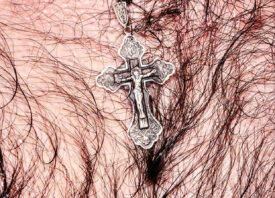Search this site
Beauty is in the Eye of the Beholder: Sweeping Views of Soviet Suburbs
© Alexander Gronsky/INSTITUTE
©Alexander Gronsky/INSTITUTE
Our idea of beautiful surroundings is rarely connected to Soviet architecture. But for Russia-based photographer Alexander Gronsky, there is beauty in the communist-style outskirts of Moscow. Gronsky’s camera captures the places where the city meets the countryside, areas that are not completely urban but they don’t belong entirely to nature either. The people appearing in the photos seem insignificant islands of humanity in this mix of unfriendly architecture and rurality. And there is something quiet and surprising in his photos, and yet uneasy. “I always enjoy these borderline and kind of undefined areas and I just wanted to present them in a very sweet and romantic way,” says Gronsky.
The photographer also says that his photos are not an environmental or social commentary or critique. He prefers them to remain undefined, so one cannot focus on whether they evoke something good or bad. “Definitions are what obscures a lot of meaning you can get from an image. The image itself is more important than the definition,” he says.
Historically, building massive flats is something most communist regimes did in Eastern Europe and this had a long term impact on the aesthetics of urban spaces. Expanding the cities this way was meant to accommodate the large number of people moving to the cities to benefit from the large scale industrialization of that period. This style of building is currently but less extensively kept in many post-communist countries.
The photos from the Pastoral series have been collected in a book published by Contrasto.

© Alexander Gronsky/INSTITUTE

© Alexander Gronsky/INSTITUTE

© Alexander Gronsky/INSTITUTE

© Alexander Gronsky/INSTITUTE

© Alexander Gronsky/INSTITUTE

© Alexander Gronsky/INSTITUTE

© Alexander Gronsky/INSTITUTE





